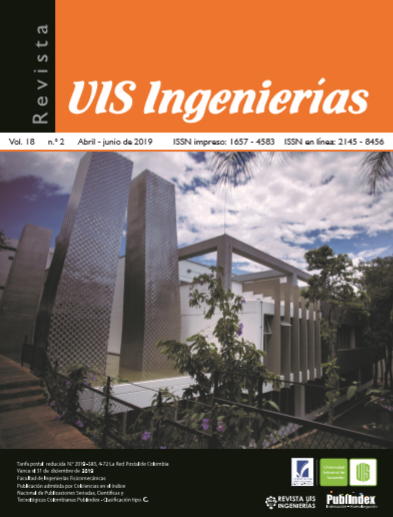Modelos matemáticos para controladores de las bombas de cavidad progresiva
Publicado 2019-02-02
Palabras clave
- bomba de cavidad progresiva,
- filtro de kalman,
- lógica difusa,
- producción de petróleo,
- regulador cuadrático lineal
Cómo citar
Resumen
Las bombas de cavidad progresiva son un método de levantamiento artificial utilizado en pozos petroleros de Canadá, Colombia y Venezuela. En este método, la bomba de subsuelo está conectada hasta el motor en superficie, por medio de una varilla que la hace rotar. La eficiencia es un tema central, especialmente cuando se trata de producción de energía. Actualmente el enfoque de control para estos sistemas se basa en cambios discretos, y busca un punto de operación. En este artículo se simulan numéricamente estrategias de control continuas, incluyendo lógica difusa. Se utiliza un sensor de presión de fondo de pozo. Cuando dicho sensor no está disponible, se estima el nivel de fluido encima de la bomba por medio de la implementación de un filtro de Kalman. Para la optimización de la producción, se utiliza un regulador cuadrático lineal (LQR, por sus siglas en inglés). Los resultados muestran un buen desempeño al compararlo con las técnicas actuales.
Descargas
Referencias
J. Chen, H. Liu, F. Wang, G. Shi, G. Cao, y H. Wu, “Numerical prediction on volumetric efficiency of progressive cavity pump with fluid–solid interaction model, ” J. Pet. Sci. Eng., vol. 109, pp. 12-17, 2013. doi: 10.1016/j.petrol.2013.08.019
T. Ernst et al., "Back Spin Control in Progressive Cavity Pump for Oil Well," 2006 IEEE/PES Transmission & Distribution Conference and Exposition: Latin America, Caracas, 2006, pp. 1-7. doi: 10.1109/TDCLA.2006.311587
M. Lehman, “Progressing cavity pumps in oil and gas production,” World Pumps, vol. 2004, no. 457, pp. 20-22, 2004.
B. Nesbitt, Handbook of Pumps and Pumping. Pumping Manual International. Amsterdam: Elsevier Science, 2006.
Gasparri, A. A. Romero, y E. Ferrigno, “PCP Production Optimization in Real Time With Surface Controller,” SPE Artificial Lift Conference-Americas, 2013. doi: 10.2118/165057-MS
M. Wells and J.F. Lea, Gas Well Deliquification. Elsevier. 2008. doi: 10.1016/B978-0-7506-8280-0.X5001-X
K. A. Woolsey, “Improving Progressing Cavity Pump performance through automation and surveillance,” SPE Progressing Cavity Pumps Conference, 2010.
“Lufkin well manager - progressing cavity pump controller,” 2016 General Electric Company, 2013.
J. Eck y L. Fry, “Eck et al. - 1999 - Downhole monitoring the story so far,” Oilfield Review, vol. 3, no. 3, pp. 18-29, 1999.
M. Changela and A. Kumar, “Designing a controller for two tank interacting system,” International Journal of Science and Research, vol. 4, no. 5, pp. 589-593, 2015.
M. E. Dreier, W L. McKeown, and H. WScott, Fuzzy Logic and Neural Network Handbook. McGraw-Hill, Inc., 1996.
C-T Chen, Linear System Theory and Design. , New York, USA: Oxford University Press, 2013.
K. Chate, O. E. Prado and C. Rengifo, “Comparative Analysis between Fuzzy Logic Control, LQR Control with Kalman Filter and PID Control for a Two Wheeled Inverted Pendulum” en Advances in Automation and Robotics Research in Latin America, Springer, 2017, pp. 144-156.
T. Nguyen, H. Tu, E. Al-Safran and A. Saasen, “Simulation of single-phase liquid flow in progressing cavity pump,” J. Pet. Sci. Eng., vol. 147, pp. 617–623, 2016. doi: 10.1016/j.petrol.2016.09.037
H. B. Bradley, Petroleum Engineering Handbook. Texas, USA: Society of Petroleum Engineers, 1987.
H. Klee and R. Allen, Simulation of Dynamic Systems. CRC Press, 2012.

